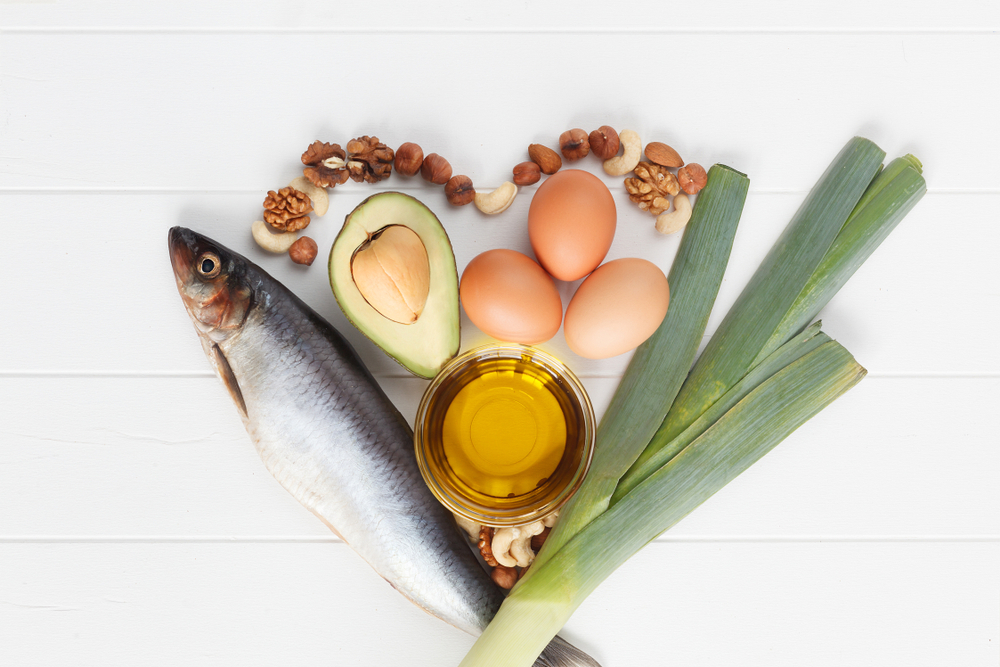How Vitamin D Boosts Immunity

Move over, vitamin C—there’s a new flu buster in town! Vitamin D plays an important role in immune system support. Also known as the sunshine vitamin, vitamin D is every bit as important as its antioxidant counterparts whenever the immune system is under duress, like during a cold or flu.
If you’re one of those people who keeps getting sick and you don’t know why, read on to see how vitamin D helps your immune system boost immunity and fight viral infections.
What Is Vitamin D?
First, it’s important to understand that vitamin D isn’t a “vitamin” at all, but rather a prohormone that is synthesized in response to interaction between cholesterol, the skin, and sun exposure.
Vitamin D is widely studied for all kinds of health benefits, like bone health, calcium absorption, heart health, and immunity. [1-10] While experts differ on how much vitamin D is needed to provide protection and avoid symptoms of insufficiency or deficiency, nearly everyone agrees that you cannot get enough vitamin D from food alone. [8]
This might explain why even if you’re sipping on that gut-healing bone broth, it might not be enough to keep you fully protected from the flu.
Vitamin D Reduces Risk of Viral Infection
Cold and flu viruses are contagious respiratory infections that affect the nose, throat, and lungs with symptoms like congestion, coughing, wheezing, sore throat, body aches, and fever. The flu, in particular, can have serious consequences in people who are at risk, such as the elderly, infants, young children, people with suppressed immunity, and those with other chronic disorders.
On any given year, approximately 10% of the population gets the flu, but during epidemic flu seasons, it can be as high as 20%. [12, 13] There are several overlapping factors that are associated to both the severity of the flu and being at risk of vitamin D deficiency, including:
- Age (under age 2 or over age 65)
- Pregnancy
- Chronic disease (diabetes, heart disease, autoimmunity, etc.)
- Suppressed immunity (HIV, AIDS)
While flu vaccines are common, they only address a few strains based on the best guesses by experts of which strains will predominate. Sometimes experts guess wrong, rendering the flu vaccine less effective during those seasons. What doesn’t change, however, is the immune system’s reliance on vitamin D levels, making it a more secure way to boost immunity and avoid the flu.
It’s not coincidental that flu season peaks as our natural ability to produce vitamin D falls due to reduced sun exposure in the colder months. [17] Research shows that for every 4 ng/mL increase in your vitamin D concentrations in the blood, you lower your odds of getting the flu by 7%.
Research also shows that optimal vitamin D levels can boost the effectiveness of the flu vaccine. [14] One study drew a direct link between vitamin D levels and the risk of getting the flu: Those with the lowest serum concentrations had the highest chances of getting viral infections. [15]
How Vitamin D Boosts the Immune System
Vitamin D boosts the innate branch of the immune system, the body’s first line of defense against infection, and the first to mount an attack against foreign invaders. The response time for this branch of the immune system is strongly associated with our ability to ward off illness or shorten the duration of sickness. [16] When vitamin D levels are low, immune cells respond slower and the innate immune response is not as rapid as it should be.
Receptors for vitamin D are located on cell surfaces in the immune system, allowing vitamin D to bind to them. When this happens, vitamin D reduces inflammatory cytokines that perpetuate illness. It also boosts the proteins that fight bacteria and viruses—which are essentially the natural versions of antibiotics that protect the body from infection.
Vitamin D Boosts Immunity the Most in People with Lower Levels
Most Americans get far less than the recommended daily allowance for vitamin D of 600 IU, setting the stage for rampant deficiencies. Certain people, like those with Crohn’s disease, celiac disease, osteoporosis, or women who are pregnant or breastfeeding have an even higher risk of being deficient because of issues with absorption in the intestines.
When you have sufficient levels of vitamin D, you lower your chances of getting sick from viral infections like COVID and the flu by at least 10%. But people who are deficient in vitamin D actually see a greater protective benefit when they supplement, reducing their risk by 50%. [11]
Even if you do get sick, increase your vitamin D levels immediately for faster recovery. When your levels are too low, your body will struggle for longer to bounce back.
How to Responsibly Supplement with Vitamin D
If you cannot get sun exposure regularly—as many Americans do not from September through March each year—then supplementation is essential to maintain steady levels. Vitamin D3 is considered to be the natural form and is most effective at raising serum concentrations. [18] A 2015 meta-analysis estimated daily doses of 1,885, 2,802 and 6,235 IU of vitamin D3 for normal weight, overweight, and obese individuals, respectively. [19]
It’s wise to get your blood levels checked before supplementing. Vitamin D is a fat-soluble nutrient, meaning your body has limited ability to excrete it, and over-supplementing with vitamin D can cause toxic levels to build in the body. A healthy blood range is above 30 ng/mL, with insufficiency falling between 20 and 29 ng/mL and deficiency as anything below 20 ng/mL. [20]
The Bottom Line
Vitamin D is a critical nutrient for immune support. When the body is low in this nutrient, immune system cells will have slower response times to viral invaders, sickness duration will be longer, and overall immunity will be suppressed.
Vitamin D is one of the few nutrients that doesn’t have an abundance of food sources. We were designed to produce most of the vitamin D we need in the skin from sun exposure. But between food and supplements, as well as sun exposure in the warmer months, we can optimize our vitamin D levels for overall health.
References
- Klibanski, A., et al., Osteoporosis prevention, diagnosis, and therapy. Jama-Journal of the American Medical Association, 2001. 285(6): p. 785-795.
- Holick, M.F., Vitamin D: importance in the prevention of cancers, type 1 diabetes, heart disease, and osteoporosis. American Journal of Clinical Nutrition, 2004. 79(3): p. 362-371.
- Dawson-Hughes, B., et al., Estimates of optimal vitamin D status. Osteoporosis International, 2005. 16(7): p. 713-716.
- Bischoff-Ferrari, H.A., et al., Estimation of optimal serum concentrations of 25-hydroxyvitamin D for multiple health outcomes. American Journal of Clinical Nutrition, 2006. 84(1): p. 18-28.
- Holick, M.F., High prevalence of vitamin D inadequacy and implications for health. Mayo Clinic Proceedings, 2006. 81(3): p. 353-373.
- Jackson, R.D., et al., Calcium plus vitamin D supplementation and the risk of fractures. New England Journal of Medicine, 2006. 354(7): p. 669-683.
- Holick, M.F., Vitamin D deficiency. New England Journal of Medicine, 2007. 357(3): p. 266-281.
- Holick, M.F. and T.C. Chen, Vitamin D deficiency: a worldwide problem with health consequences. American Journal of Clinical Nutrition, 2008. 87(4): p. 1080S-1086S.
- Ross, A.C., et al., The 2011 Report on Dietary Reference Intakes for Calcium and Vitamin D from the Institute of Medicine: What Clinicians Need to Know. Journal of Clinical Endocrinology & Metabolism, 2011. 96(1): p. 53-58.
- Gillespie, L.D., et al., Interventions for preventing falls in older people living in the community. Cochrane Database of Systematic Reviews, 2012(9): p. 408.
- Molinari, N.A., et al., The annual impact of seasonal influenza in the US: measuring disease burden and costs. Vaccine, 2007. 25(27): p. 5086-96.
- Shrestha, S.S., et al., Estimating the burden of 2009 pandemic influenza A (H1N1) in the United States (April 2009-April 2010). Clin Infect Dis, 2011. 52 Suppl 1: p. S75-82.
- Berry, D.J., et al., Vitamin D status has a linear association with seasonal infections and lung function in British adults. Br J Nutr, 2011. 106(9): p. 1433-40.
- Gruber-Bzura, B.M., Vitamin D and Influenza-Prevention or Therapy? International journal of molecular sciences, 2018. 19(8): p. 2419.
- Laaksi, I., et al., An association of serum vitamin D concentrations < 40 nmol/L with acute respiratory tract infection in young Finnish men. Am J Clin Nutr, 2007. 86(3): p. 714-7.
- Cannell, J.J., et al., On the epidemiology of influenza. Virol J, 2008. 5: p. 29.
- Martineau, A.R., et al., Vitamin D supplementation to prevent acute respiratory tract infections: systematic review and meta-analysis of individual participant data. BMJ, 2017. 356: p. i6583.
- Nair, R. and A. Maseeh, Vitamin D: The “sunshine” vitamin. Journal of pharmacology & pharmacotherapeutics, 2012. 3(2): p. 118-126.
- Veugelers P, Pham TM, Ekwaru J. Optimal Vitamin D Supplementation Doses that Minimize the Risk for Both Low and High Serum 25-Hydroxyvitamin D Concentrations in the General Population. Nutrients. 2015 Dec 4;7(12):10189–208.
- Holick, M.F., et al., Evaluation, treatment, and prevention of vitamin D deficiency: an Endocrine Society clinical practice guideline. J Clin Endocrinol Metab, 2011. 96(7): p. 1911-30.
Aimee McNew
Aimee McNew is a nutritionist and writer who focuses on women’s health, infertility, and postpartum wellness.
More About The Author



